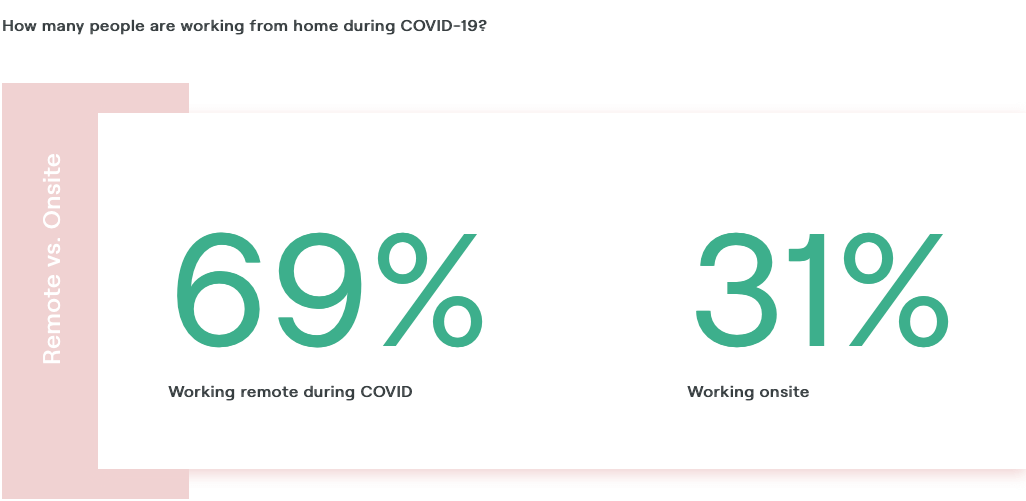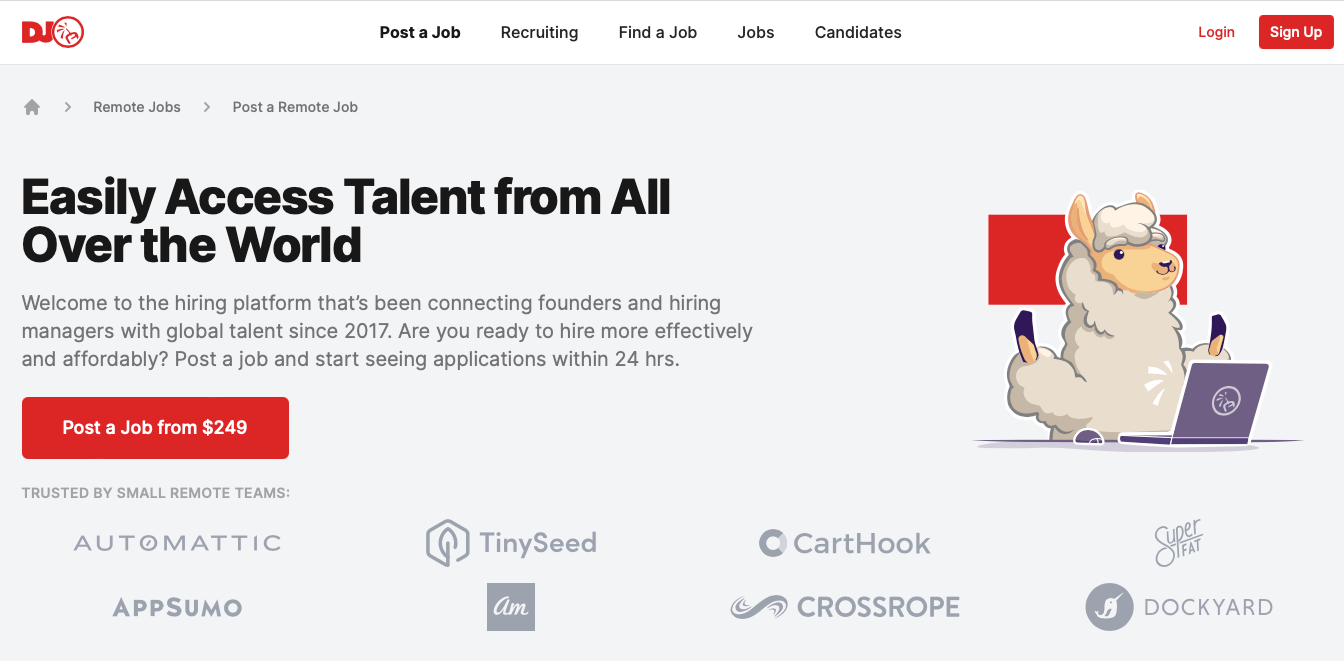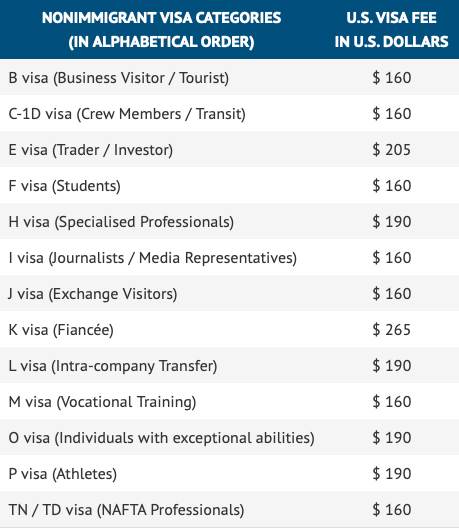How Can You Hire Workers from Anywhere in the World for Remote Employment


Today your company no longer needs to limit itself to the geographical borders of your state, country, or region and you can instead hire workers from anywhere in the world. In fact, with the Covid-19 pandemic, remote employment has become somewhat of a necessity for many companies.
For instance, according to the Future Workforce Report, by 2025, 36.2 million Americans will work remotely.
Another survey, by Owl Labs, found that close to 70% of full-time employees in the U.S. started working from home.

However, hiring remote workers, especially from other countries, comes with a set of challenges, including legal and compliance ones.
Therefore, this article will explain what you and your company should pay attention to when hiring workers from other countries to ensure that you hire what your company needs to succeed.
Why Should Your Company Look Into Remote Employment From Other Countries?
- There’s a lack of skilled local workforce
While many companies are more than successful hiring locally, if you hire workers from other parts of the world, you increase the likelihood of hiring the best workforce, especially if there is a shortage of skilled talent around you. - Employees from other countries and cultures bring diversity and new ideas
The second advantage of remote employment is that this brings diversity into your workforce. With that, you can get new ideas and ways to do things that maybe you haven’t considered before. - It’s a good idea if you want to get into new markets
In addition, hiring from other countries can also help strengthen your expansion strategy and venture into new markets. This again ties a bit with the cultural aspect, as sometimes your own people may not understand the cultural differences as well as the locals. - Lower overhead costs
Since they are working from their home, you don’t have to pay for the office space, supplies or tools they are going to use, insurance, etc.
How to Hire Employees from Other Countries?
So how do you go about hiring remote workers?
1) Get the Necessary Certifications
First, you will need to apply for a certification with the Department of Labor (DoL) to be approved to hire workers from other countries. There is no limit as to how big your company needs to be to get the certification, but this is necessary to protect the rights and work opportunities of U.S. citizens.
To get the DoL certification, you will need to:
- Show evidence that you need to hire workers from other countries to fill your vacancy
- Prove that there are no qualified workers in the U.S. who are willing to step in at the prevailing wage
- Demonstrate that you can, at the minimum, pay the foreign candidate the prevailing wage
- Provide evidence that your vacancy meets the criteria for the foreign labor certification program
- Complete and sign the necessary ETA forms and send them to the designated office
2) Search for the Right Candidates

Once you obtain the necessary certification from the Department of Labor, you can start your search for the right candidate.
There are many job sites and platforms for remote employment opportunities such as Dynamite Jobs, that you can check out. We won’t, however, go into these here, but in general, it’s best if you go through the interview and hiring process the same as you would normally, but keep in mind that their resumes and CVs might contain information that you usually won’t see in the U.S. resumes.
Once you’ve vetted a few potential candidates, you can conduct an interview with them. This can be as simple as using an email, or you can use a video conferencing tool such as Skype or Zoom if they are living in another country.
3) Check if They Need a Work Visa
You may also need to apply for a remote worker for a work visa if you intend to work in the United States.
If they are already in the U.S., all you need to do is verify their work authorization by using Form 1-9 and apply with the U.S. Citizenship and Immigration Services.
If applying for a work visa for someone who is not in the U.S. it’s a little more complicated.
Namely, you’ll need to sponsor a visa for them.
Sponsoring a work visa can take several weeks and up to a month and there is no guarantee that it will be approved by the relevant authorities, not to mention that it can cost around $150-250, plus additional fees.
Here are the typical fees for a work visa in the United States:

To sponsor a foreign employee for a work visa in the U.S. you will need to:
- Apply for a Labor Conditions Applications
- Provide any required documents and company statements
- Send the petition for a work visa on behalf of the employee
4) Tax Regulations
An employer in the United States must withhold and pay taxes in the state of the employee, even if the company doesn’t hold an office in it.
That means the company must register their business with the tax agency of the employee’s state and withhold and pay any taxes by that state’s laws.
Of course, these laws and regulations will be different from one state to another and it gets even more complicated if we’re talking about hiring employees in other countries.
In that case, the employer is taxed according to the taxation regulations of the other country, unless the United States have a tax treaty with them. Again, these laws vary from one country to another so it’s necessary to get familiar with them beforehand.
How to Pay Foreign Workers Legally?
The biggest dilemma that U.S companies will have when hiring remote workers from other countries will, of course, be how to pay them and not run afoul of the law?
There are several options available to you when you need to pay an international employee, including:
Each of these options has its pros and cons, so it’s best to look at them all before you decide on either of them.
Bank-to-Bank Transfers
Bank-to-bank transfers are the most common and one of the oldest ways (except probably an envelope) of sending money abroad, but they are also the slowest and can be expensive depending on the fees the bank is charging per transaction. Typically, it takes 3 to 5 days for the transaction to be cleared and direct transfers can incur fees up to $40 per one transaction.
PayPal
PayPal is today one of the most popular and safest ways to send money online and it’s also very convenient. The fees are usually much lower than with bank-to-bank direct transfers and PayPal will charge 2.9% per transaction. The biggest problem here may be that PayPal can sometimes hold money for unknown reasons and their customer service is not the best.
SWIFT
With SWIFT, it’s possible to directly send money internationally from one bank to another. The difference between SWIFT and bank-to-bank transfer is that to use SWIFT you need an open account in the currency that you’ll be sending money in. So, for instance, if you want to send money to Europe from the U.S, you will need to open an account in Euros.
MoneyGram
Another option to send money anywhere in the world is MoneyGram. The caveat here is that you will need to physically go to a MoneyGram outlet closest to you to send the money and the recipient will have to do the same to receive the money. In addition, MoneyGram charges $11.50 for every transaction under $900 and $2% extra for transactions above that.
Western Union
Western Union is a similar option to MoneyGram, except that it also allows online transfers, whereas MoneyGram does not. WU also charges a bit higher fees and they vary depending on the sending method. With direct bank transfers, expect lower fees, but longer wait, while cash transfers are faster, but with higher fees.
Can Payroll Compliance Companies Help?
There is also an option to outsource your payrolls to an international payroll compliance company such as Panther, Deel, or Oyster. These can be very useful for smaller companies or if you’re understaffed with administrative staff, but as your company grows, it’s better to handle payrolls in-house.
That said, there are a few pros and cons of outsourcing payrolls to one of these, so weighing your options carefully is important:
Pros:
1. Experience and expertise in the field
Finance and accounting are immensely complicated fields and regulations are constantly changing so you need someone who can always stay ahead of them.
And if you’re also hiring workers from other countries, you need to be familiar with international regulations as well.
This is why such tasks must be done by experts in the matter and not ad hoc and a payroll compliance company can help you there.
2. Initial cost
For smaller businesses the costs of hiring and training internal staff to handle payrolls, plus all the expenses that go with that, such as computer equipment and software, can be too high and so outsourcing payrolls can be beneficial.
3. Time
Another benefit of outsourcing payrolls is that it will save you time to focus on other things.
There are a lot of nuances in finance and you have to handle multiple activities at the same time, which only get bigger as your company grows.
4. Compliance
Finally, and this is likely the most important thing for companies that hire internationally, you need to be aware of different laws, regulations and rules.
Remember that if you are hiring someone from another country, you will have to handle their payment and taxes according to the laws in their country and not yours and this is probably not something that you’ll be too familiar with.
This is why a payroll company that works globally can help you with compliance.
Cons:
1. Privacy and security
Hiring a third party to handle sensitive data such as employee payrolls, which include their private and financial information carries with it a risk.
How well do these companies protect your data on their servers? In December 2021, payroll software company Frontier Software was hit with ransomware, which forced them to take down their server as a precaution.
2. Long-term costs
While hiring a payroll company can save your business money on training and equipment initially, you need to be aware that the expenses here will accrue the bigger your company gets and the more paychecks you need to handle.
Typically, payroll companies charge per paycheck and the cost can vary between $1 and $5. So let’s say you have 100 employees that you need to pay, that’s already $500 out of your pocket.
3. Delays
Delays in paycheck delivery are especially present when dealing with international workers and are a constant point of contention between employers and employees.
These are typically caused by poor communication, but also outside factors such as software, holidays, etc.
Contractors vs Employees: When Should You Convert Independent Contractors into Full-Time Remote Employees?

A mistake that many companies make is mixing contractors with employees.
There are, however, certain legal and practical differences between these two and misclassification can bring audits, fines and other penalties for your company.
Here are the key differences between contractors vs employees::
- An employee is covered by federal and state employment and labor laws, while the independent contractor is not
- An employee must provide their name, address, SSN, tax filing status and exemptions on a W-4 form, while the contractor provides their name, address, Taxpayer ID Number and the rest on a W-9
- The employer must report all they pay to the employee during the tax year on a W-2, whereas they only have to do that if the payments go above $600 in a calendar year and do so on a 1099 form
- For employees, the employer also has to report for the state and federal Unemployment Insurance, while they don’t have to do that for an independent contractor
- An employee’s job may include a variety of duties and tasks, where the contractor is only responsible for what it states in the scope of work (SoW) or their contract
- Finally, independent contractors can work with one or more clients, whereas an employee can only have one
So how do you know that it’s time to convert an independent contractor into a full-time employee?
Here are the signs that you need to look for:
1. Is the contractor classified as such in their country?
Remember that you have to comply with the laws of the country the contractor is in and not yours. These laws can, naturally, vary and what qualifies as a contractor in the United States does not necessarily qualify the same in another country.
2. You want to protect your company’s intellectual property (IP)
Certain countries give intellectual property rights to the independent creator and not the company so if you want to keep those IP rights, it’s a good idea to convert them as an employee rather than a creator.
3. You want to be able to provide benefits to the contractor
A contractor is not entitled to the certain benefits that the employee has, such as health insurance, paid time off and is only compensated in cash, so if you want to provide such benefits to the contractor you will need to convert them to employee status.
4. You want to save money in the long run
Contractors often have higher wages than employees. While this may not be much of a problem in the short term, in the long-run, however, working with an employee is cheaper for the company.
This means that you should carefully consider if you intend to work long-term with the contractor and if that’s the case, convert them to an employee.
5. You want the contractor to play a bigger role in your company
While contractors are hired to work on a very specific task, they don’t have much of a role in the company otherwise. Namely, once the project is completed or their contract ends, they are no longer working for you.
If you found an impressive contractor that you believe can add something for your company and would like them to have a more active role, consider making them an employee to keep them long-term.
6. You don’t want the competition poaching the contractor away from you
Another reason to switch someone from a contractor to employee status is to prevent other companies from hiring them first or stealing them away from you.
As we said before, one of the main differences between independent contractors vs employees is that contractors can work with multiple clients. This means that you have the risk of the same contractor working with rival companies and potentially revealing company secrets.
Often, companies will protect themselves with Non-disclosure Agreements (NDA) they give to contractors to sign, but depending on the country the contractor is in, its laws may allow him to work for your competition.
7. The contractor wants to become an employee
Finally, consider what the contractor wants.
Do they want to become an employee and receive the benefits and play a more active role in the company? The life of a freelance contractor can be uncertain at times, so they may prefer the security of full-time employment.
Conclusion
The decision to hire employees in other countries is not an easy one and it requires careful consideration as there are a lot of factors to think about.
According to a survey by the Becker Friedman Institute, about a third of 10,000 surveyed employees said they feel more productive and engaged when working from home or remotely.
First of all, you need to consider the needs of your company. Can a remote employee from another country bring to the table something that a U.S. citizen can’t?
Also, if you’re hiring people from other countries, keep in mind that you’ll have to refer to the laws of the country they are based in and not yours, which includes taxes for instance.
Finally, you should also consider their status, (contractors vs employees). If you’re hiring them for a specific project and on contract, hiring someone as a contractor may be the better option, but if you mean to have a long-term business relationship with them, it may be better to hire them as full-time employees.
We hope that this article has given you a good idea of how to hire workers from other countries for remote employment that can bring success to your company.
Related Posts:


Featured Remote Jobs
 New Job! Featured Job Remote Job
New Job! Featured Job Remote Job New Job! Featured Job Remote Job
New Job! Featured Job Remote Job Opened 9 days ago Featured Job Remote Job
Opened 9 days ago Featured Job Remote Job Closes in 14 days Featured Job Remote Job
Closes in 14 days Featured Job Remote Job Closes in 12 days Featured Job Remote Job
Closes in 12 days Featured Job Remote Job Closes in 8 days Featured Job Remote Job
Closes in 8 days Featured Job Remote Job Closes in 7 days Featured Job Remote Job
Closes in 7 days Featured Job Remote Job Closes in 6 days Featured Job Remote Job
Closes in 6 days Featured Job Remote Job
